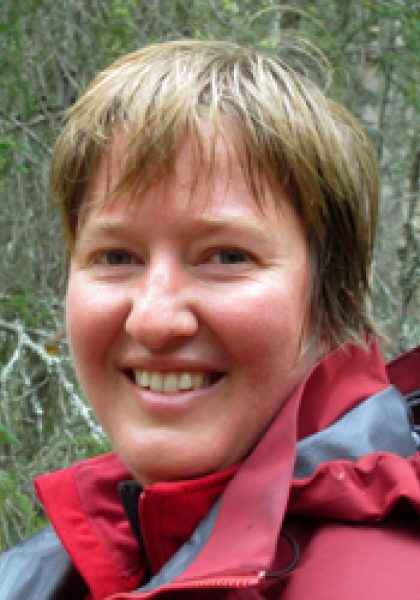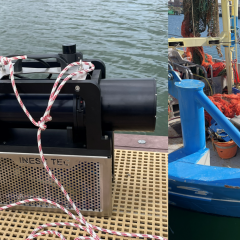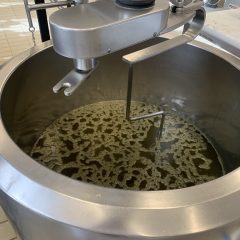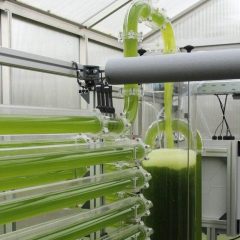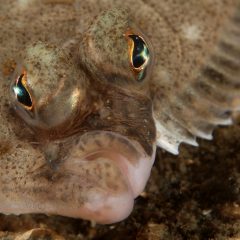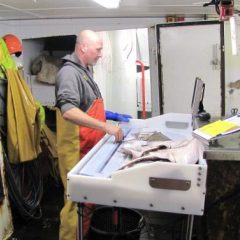Dossier Biodiversity in and on the sea floor
The Belgian North Sea is a small but very interesting area in terms of biodiversity. Much of it is found in and on the sea floor. However, the marine bottom is under pressure from the many activities at sea. Therefore, monitoring the marine environment is absolutely essential.

What does ILVO do?
-
 ILVO studies biodiversity in/on the Belgian seabed, including through microscopy studies, in order to monitor the ecological status.
ILVO studies biodiversity in/on the Belgian seabed, including through microscopy studies, in order to monitor the ecological status. -
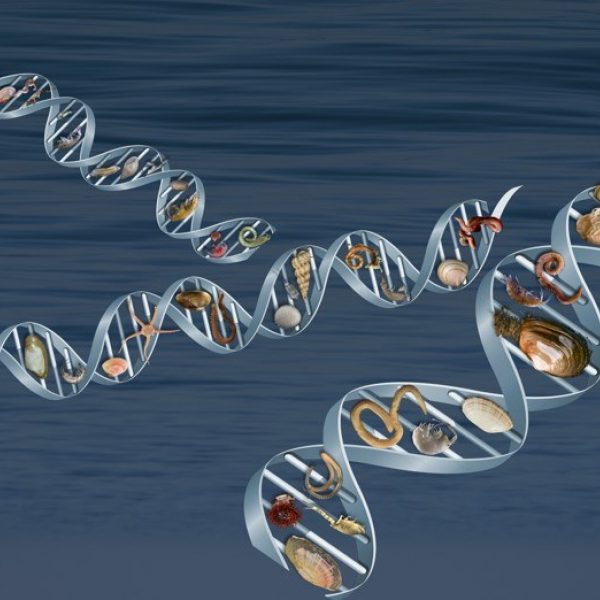 ILVO is looking at cost-effective options for mapping North Sea biodiversity through genetic applications.
ILVO is looking at cost-effective options for mapping North Sea biodiversity through genetic applications. -
 In addition to structural biodiversity, ILVO also examines functional diversity, based on the ecosystem functions of organisms.
In addition to structural biodiversity, ILVO also examines functional diversity, based on the ecosystem functions of organisms.
What lives in the Belgian part of the North Sea and more specifically in/on the seabed?
The Belgian part of the North Sea (3457 km²) occupies only a small part of the entire North Sea (575,000 km²), yet it is a very diverse area in terms of biodiversity. Currently, a total of 2187 species have been observed in our North Sea region. A small part of them are already extinct in this area of the North Sea (14 species) or consist of wanderers that are only occasionally spotted here (e.g. certain species of whales, sea turtles, etc.). Among vertebrates, fish and birds are the most common. However, the largest group consists of invertebrates, which live mainly in or on the bottom. These so-called benthos or benthic organisms can be divided into five groups, depending on their size and position in or on the bottom. For example, hyperbenthos is made up of organisms that live just above the bottom, such as carrion shrimp and larvae of fish and crabs. Epibenthos lives on the sea floor, including invertebrates such as shrimp, crabs, snake stars and starfish. However, this group also includes a group of vertebrates, namely demersal fish (such as plaice, dab and sole, for example). Finally, a large number of species live buried in the sea floor. These are classified according to size, i.e. macrobenthos (larger than 1 mm), meiobenthos (smaller than 1 mm) and microbenthos (single-celled organisms such as bacteria and diatoms). The most common species groups for macrobenthos include bristle worms, bivalves and flea crabs. Examples of meiobenthos include roundworms and one-eyed crayfish. ILVO research focuses primarily on macrobenthos and epibenthos.

Where can bottom-dwellers be found in the Belgian part of the North Sea?
Benthic organisms are site-specific in the Belgian part of the North Sea. Some species prefer rather sandy bottoms, while others prefer bottoms with a higher silt content. Yet other species are opportunists that can thrive in multiple habitats. Different soil communities can thus be distinguished, each inhabited by characteristic species.

Monitoring of the benthic ecosystem to track the ecological status
There is an enormous amount of activity in the Belgian part of the North Sea. Beam trawling, sand extraction, dredging, offshore wind farms and other human constructions and recreation are some of the main activities (see dossier 'Space at sea'). All of this obviously affects biodiversity in and on the seabed. Climate change also plays a significant role by changing the natural range of species. ILVO therefore samples the seabed annually in the sand extraction zones (e.g. Thorntonbank, Hinderbanken, Buiten Ratel), at the dredging dumps near the coastal zone and in the offshore wind farms (e.g. C-Power, Belwind). This is done according to a control-impact design, where samples are taken in the impacted area itself and in a reference area. The epibenthos community is sampled using a beam trawl towed across the seafloor. Macrobenthos samples are taken with a Van Veen grab. The epibenthos drags are immediately studied on board. The macrobenthos samples are sieved on board over a 1 mm sieve to remove the sand and silt, after which the remaining shell debris and live material is fixed on formol for later analysis in the lab. This provides ILVO with a great deal of information on the species richness and the densities and biomass per species, in order to monitor the ecological status over the years.
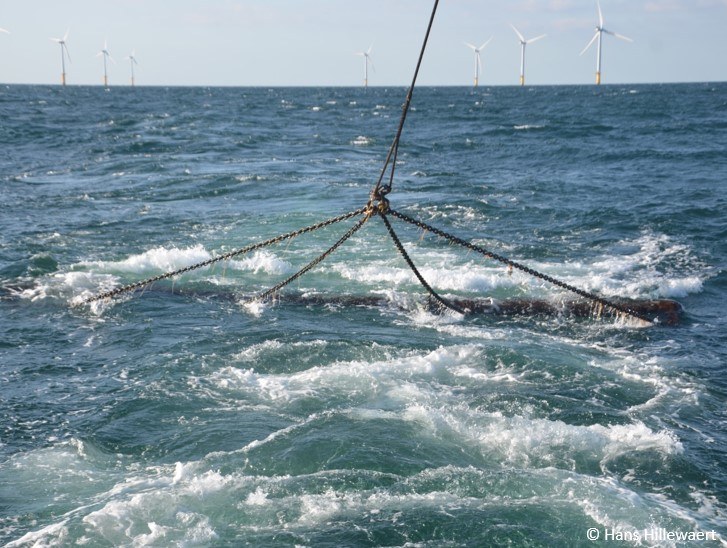 | 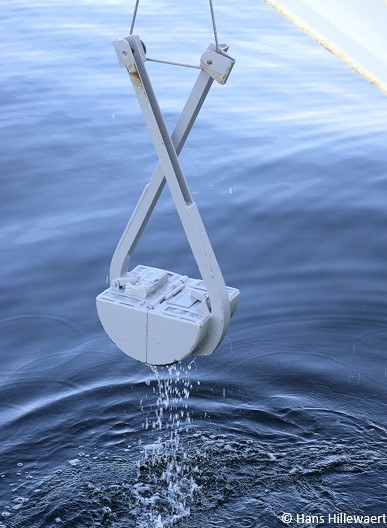 |
Sampling of the epibenthos (left) and macrobenthos (right).
Importance of biodiversity for ecosystem functioning
Biodiversity can be measured primarily by species richness in a given area. However, the different species in an ecosystem possess some biological functions. Examples of these functions include feeding mode, organism structure, organism mobility (sessile, mobile), soil encroachment (i.e. bioturbation), tube building or not... Because of these intrinsic properties, organisms play a role in the marine food web or habitat creation, among other things. All the functions together in an ecosystem determine functional diversity. Different species may possess the same functions and one species may have multiple functions. As a result, biological functions are not necessarily lost when a species disappears. Therefore, functional diversity is also a relevant and complementary measure of biodiversity. ILVO therefore also investigates the impact of different human activities (dredging, sand extraction, offshore windmills) on this functional diversity. For this purpose, functional diversity indices are calculated based on the biological functions in the impacted areas and reference areas.
How does biodiversity of the sea floor evolve?
The ILVO monitoring study shows that different activities (dredging, sand extraction and wind turbine construction) attract new species associated with fine sediments and thus provide a slightly positive effect on biodiversity. This is due to a similar transition from sandy soils to mixed soils (with fine sediments) at the different sites. However, the impact depends on habitat type and intensity of activity. For example, certain soil communities are more sensitive than others.
In sensitive habitats, dredged sediments can have an impact on biodiversity. Species diversity and density is much lower there than in reference areas. In contrast, dredging dumps generally have no significant effect on biodiversity in less sensitive habitats because the sediment type is similar to the material dumped (high silt content). Furthermore, the offshore wind farms seem to have a positive impact on the population of plaice in the Southern North Sea due to high food availability and the refugium (refuge) effect, among other things. Especially the erosion protection layer around the turbines seems to play an important role in this.
Results of monitoring research show that benthic organisms can be seen as an indicator of the ecological status in the impacted areas.
Classical monitoring vs DNA-based monitoring
At present, organisms in and on the seabed are identified by morphological characteristics through microscopy examination, which is rather time-consuming and requires taxonomic expertise. In addition to this classical monitoring, ILVO is therefore also looking at the possibility of identifying organisms to species using genetic techniques. In the framework of the GEANS (Genetic tools for Ecosystem health Assessment in the North Sea Region) project, a standardized and time- and cost-efficient method (i.e. DNA metabarcoding) was developed, in which a reference database for marine species was created with unique DNA sequences (DNA barcodes). The goal was to eventually compare DNA from bottom samples with those sequences and thus efficiently determine the impact of human activities on the benthic ecosystem. Based on the same principles, ILVO is also working on methods to extract 'environmental' DNA (eDNA) directly from environmental water within the ZERO impact project. The aim is to use DNA to determine which species occur at different locations in Belgian waters, without disturbing the organisms. Currently, species can already be detected using DNA sequences. However, it is not yet possible to determine abundances based on genetic techniques.

Non-indigenous species in the Belgian part of the North Sea
The introduction of non-indigenous or "alien" species, so-called exotic species, also has a significant impact on biodiversity. Species can be introduced into Belgian waters from anywhere in the world via ship ballast water or by attachment to ship hulls ("fouling"), in association with organisms imported for mariculture or by deliberate human introduction. When these exotic species have arrived at a particular location outside their natural range, they may become established there depending on their chances of survival, and they start to compete with the native population. An example is the American razor clam, which entered our waters decades ago as a larva via ballast water, but is currently very abundant here and has almost completely displaced the native razor clams. Other exotics that have established populations or are on the rise in our waters include the American borer mussel, the American beach clam, the Japanese oyster and the mule clam.
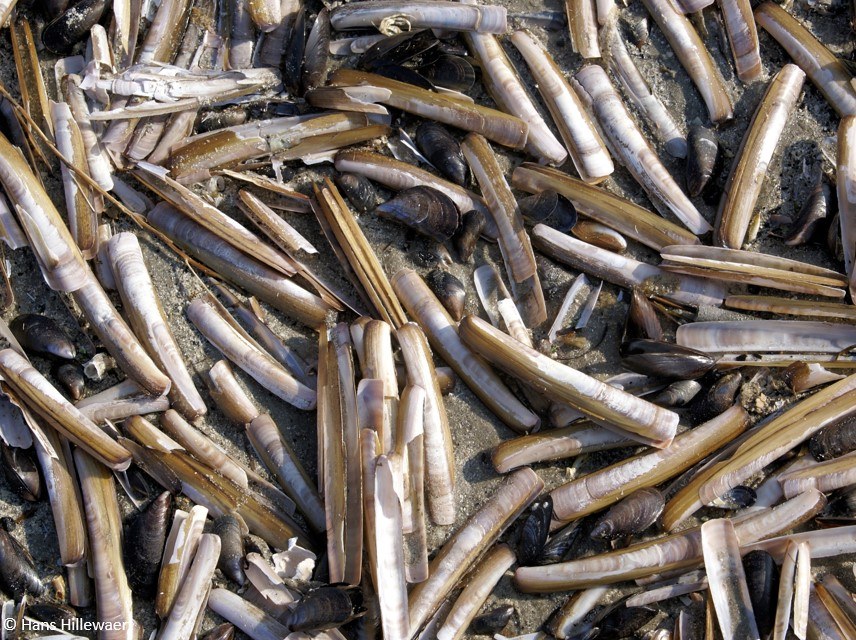
All rights of photos and animations © Hans Hillewaert (unless otherwise noted).
Contact an expert
